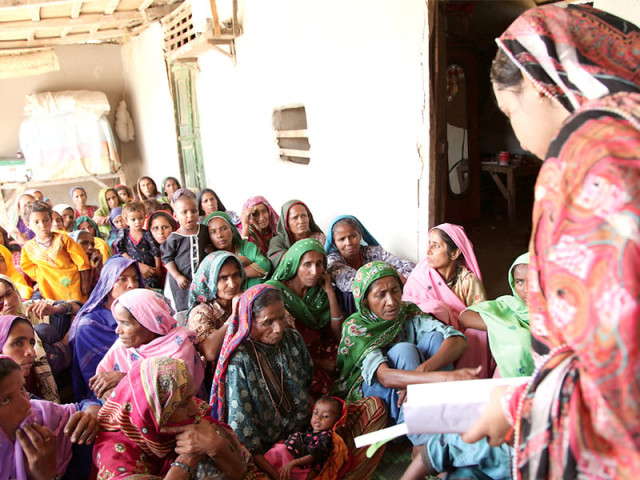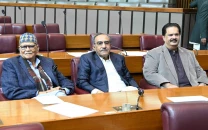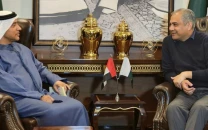'Back to Life': Fighting back
Ali Ahmed Brohi’s latest documentary, Back to Life, highlights post-flood life in Thatta.

More often than not, disasters strike unexpectedly — anytime, anywhere. Whether it’s the devastating earthquake in Haiti and Japan, the deadly tornados in the Midwest, US, or severe flooding in Pakistan, the impact — both environmental and psychological — of these catastrophes continues for many years.
Hence, in a bold attempt to bring the villagers of Thatta, who were deeply affected by the floods in July 2011, back to life, the NGO Participatory Development Initiative (PDI) decided to collaborate with director Ali Ahmed Brohi for a meaningful documentary. The purpose of the documentary, titled Back to Life, is to highlight a positive image of the individuals residing in Thatta rather than focusing on their plights and sufferings.
“Back to Life is about the recovery of lives and livelihoods of the flood affected communities in different parts of Thatta. The film highlights not only the flood problems but also how those people were helped in recovering from their problems by an NGO,” explains Brohi, who also has acclaimed films like Running Water and Innocent Dreams to
his credit.
The film depicts the struggles of the people who were badly affected by the floods that destroyed their houses, crops, businesses, and community infrastructure. “When they returned to the places of their origin, they faced food insecurity challenges and constraints to revive their livelihood activities to live with dignity.
In the 10-minute long documentary, Brohi sheds lights on the life of targeted beneficiaries residing in Khoti and Gul Mohammad Baran, the two most affected Union Councils of Thatta. “The NGO [PDI] went into post-flood rehabilitation in the hope of benefiting around 1,500 individuals by providing them with not only manual training but by even giving them cash to rebuild their lives.”
Meanwhile, the road to this project wasn’t as smooth as it may seem. While talking about the problems he faced while shooting the film, Brohi says, “There was a lot of travelling involved and it was hard to film during the extreme sun heat and the soaring temperatures. Besides, the security issues in tribal areas were also a deterrent to our cause.” When asked if funding was a problem, the film-maker said that since the project was funded by Oxfam, he had no issues regarding the resources and finances.
Brohi started shooting the documentary by the end of March 2012 and it took him over a month to produce it. Refusing to screen it at international festivals, he says, “The documentary is on YouTube, available to all. If one wishes to view it, he or she can do it from there.” However, he does mention, “I would like to share it with the people of Pakistan, in particular at various conferences and seminars, where people can understand the plight of the flood affectees and their willpower to come back to life.”
“It’s not an art film that people would love to see it at various festivals; it’s a film with a strong message about recovery that I want everyone to hear and see in Pakistan.”
Published in The Express Tribune, May 23rd, 2012.



















COMMENTS
Comments are moderated and generally will be posted if they are on-topic and not abusive.
For more information, please see our Comments FAQ